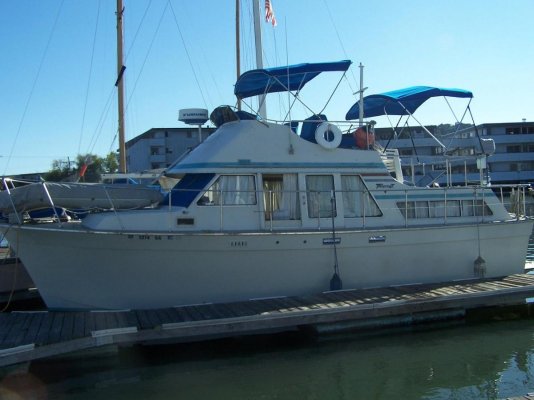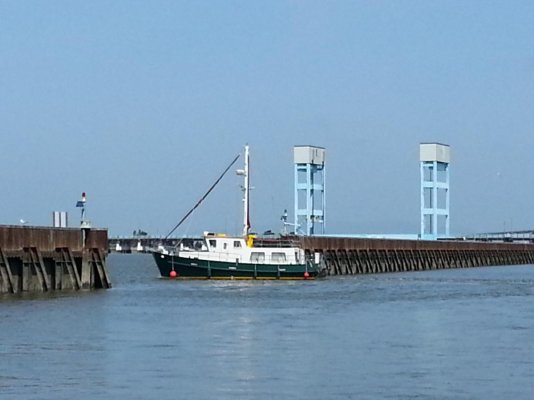Interesting item... regarding slip and boat sizes.
We're just about ready to "pull the plug" and [maybe???] get our Tolly ready for sale next spring. To do so; we'll bring her to 12 miles close rather than 100 miles away from home.
So... I visited a marina I've kept boats at before. Same great yacht harbor commander. Slip 14 is available. Our 36' OAL 34' Tolly has 12'6"' beam and the slip is 40' L x 13 W. Our boat has about 11' waterline width so she'll fit right in with two fenders hanging each side. Photo shows our boat in different slip at same marina in 2008.
Now the interesting item: Phone rang and although there were other sips available the caller was refused due to no slip wide enough to handle a 22' wide catamaran. And, all end docks are currently filled. Which makes me wonder what will happen if too many cats get sold and there's no place for them to dock?
We're just about ready to "pull the plug" and [maybe???] get our Tolly ready for sale next spring. To do so; we'll bring her to 12 miles close rather than 100 miles away from home.
So... I visited a marina I've kept boats at before. Same great yacht harbor commander. Slip 14 is available. Our 36' OAL 34' Tolly has 12'6"' beam and the slip is 40' L x 13 W. Our boat has about 11' waterline width so she'll fit right in with two fenders hanging each side. Photo shows our boat in different slip at same marina in 2008.
Now the interesting item: Phone rang and although there were other sips available the caller was refused due to no slip wide enough to handle a 22' wide catamaran. And, all end docks are currently filled. Which makes me wonder what will happen if too many cats get sold and there's no place for them to dock?


